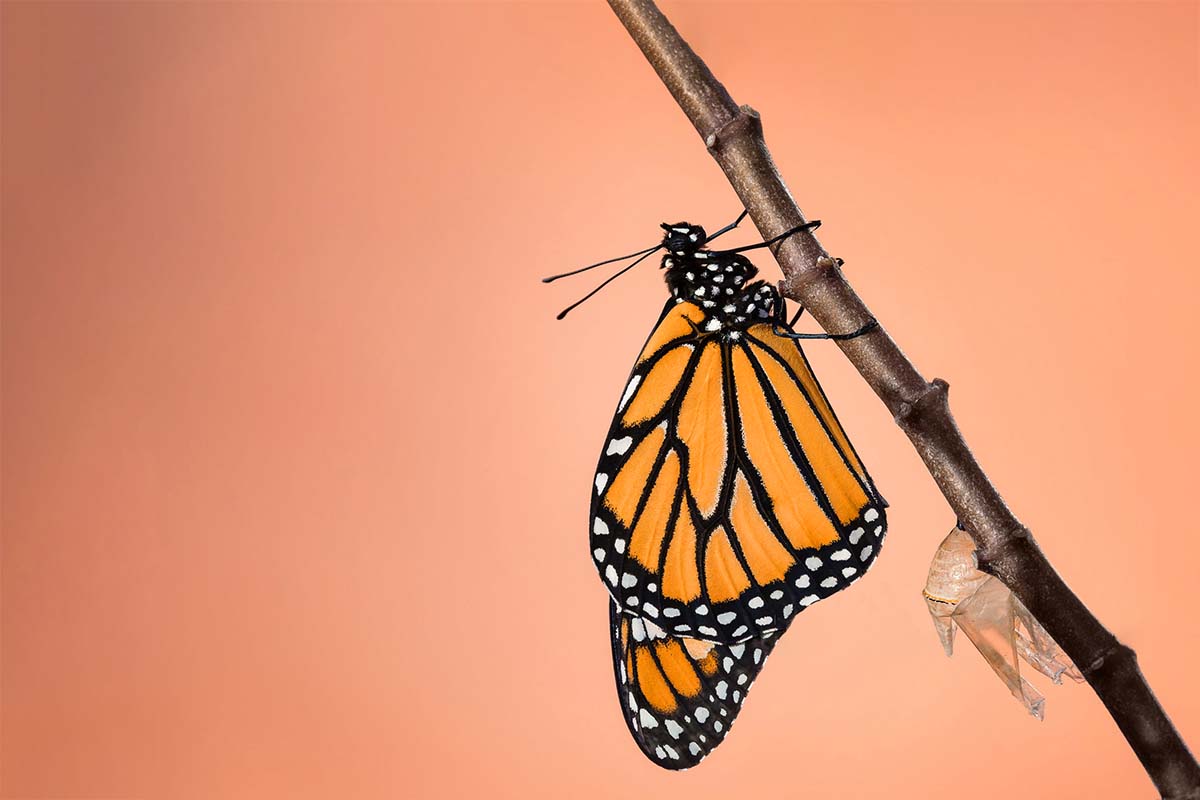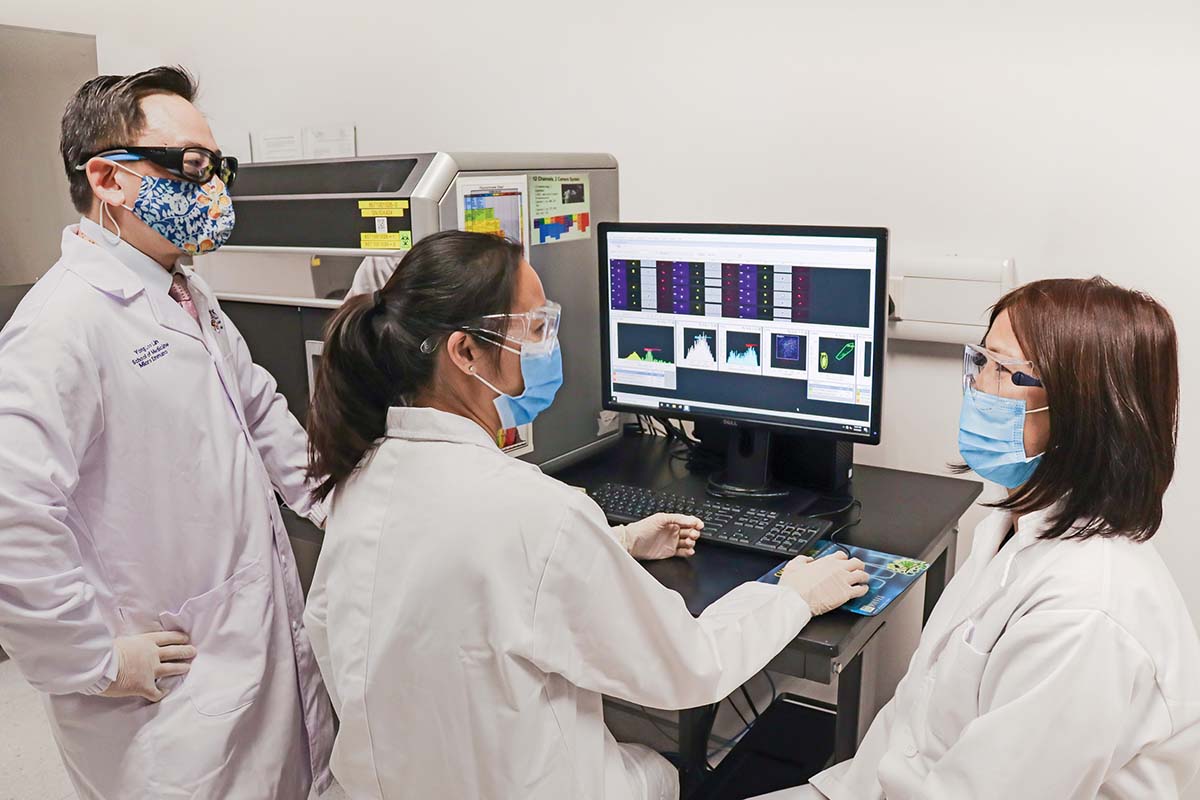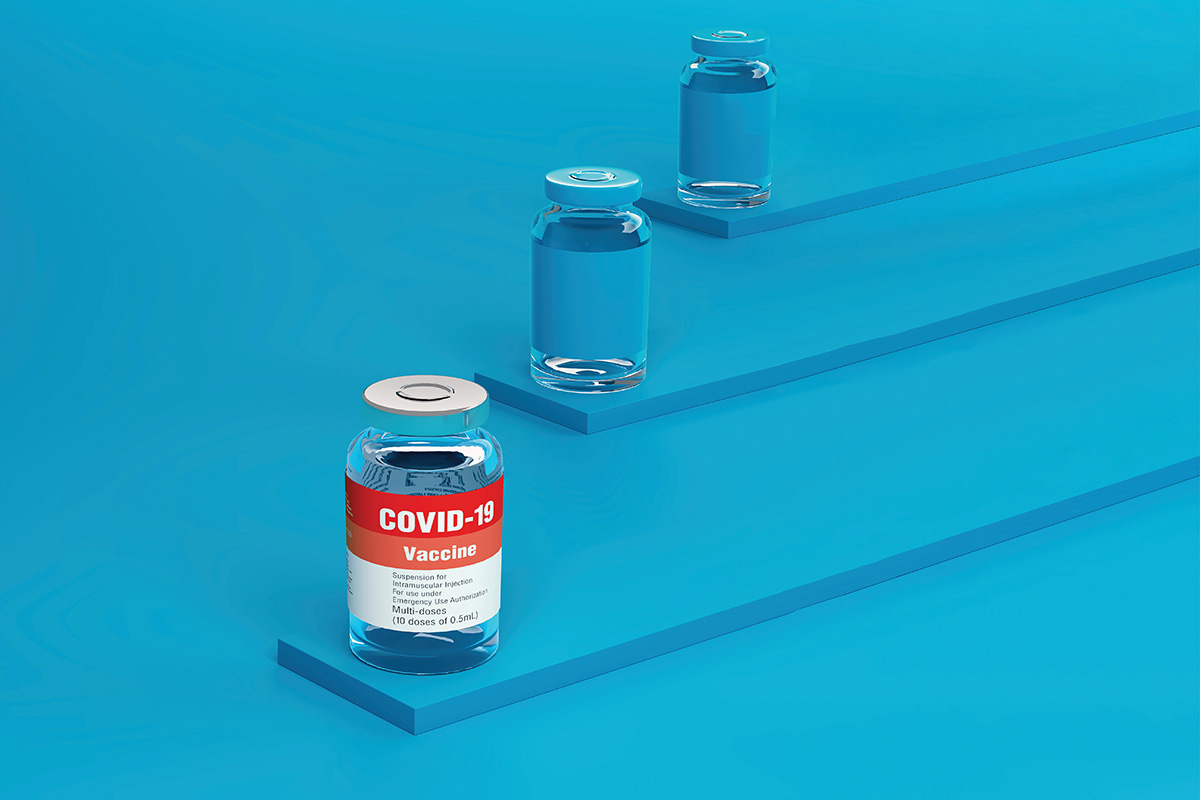
Issue 41 / February 2022
Insights
Butterflies, Burnout and the Power of Transformation

Recently, on a day off that was rare for not being packed with “catch up” activities and errands, I found myself gazing at a butterfly drying its wings after emerging from its pupa. It bore no resemblance to the fat caterpillar that had made short work of my pomelo shrub, and the first thought that crossed my mind was “Wah, just like we were taught in school”.
he next thought was about the trials of the last two years of living with COVID-19, especially from the perspective of healthcare workers grappling with exhaustion and burnout. It might seem like a tangential connection, but bear with me…
The term “burnout” came to prominence during the pandemic, and it was probably the first time that many members of the public heard about this phenomenon amongst healthcare staff and frontline workers at the coalface of the battle against COVID-19. It was also the first time it was discussed in earnest amongst senior political and healthcare leadership, as it related to maintaining healthcare capacity as wave after wave of infections crashed upon us.
What is burnout (or burn-out) exactly? It is a term from occupational psychology and is defined in the ICD-11 (the WHO Internal Classification of Diseases) as “syndrome conceptualised as resulting from chronic workplace stress that has not been successfully managed. It is characterised by three dimensions: 1) feelings of energy depletion or exhaustion; 2) increased mental distance from one’s job, or feelings of negativism or cynicism related to one’s job; and 3) reduced professional efficacy. Burnout refers specifically to phenomena in the occupational context and should not be applied to describe experiences in other areas of life.”
COVID-19 has forced us to accept that change is the only constant, and that we have to adapt, to grow and transform. Perhaps nothing so drastic as the butterfly, whose creation depends literally on the destruction of its former self, but always with self-awareness and mindful intention, and a determination to not only survive, but thrive.
One might argue that one does not have to be in a formal occupation to feel burnt out, but be that as it may, burnout is more common than we may like to admit. A related, but separate, phenomenon is compassion fatigue (or secondary traumatic stress, or vicarious traumatisation), which may arise as a result of repeated exposure to other people’s suffering and distress. Compassion fatigue may occur in the “helping professions”—healthcare workers, first responders and similar professions—and in severe cases, may even lead to PTSD (Post-Traumatic Stress Disorder).
What data do we have on local prevalence of stress and burnout? My colleague Dr See KC and his group, surveyed senior and junior doctors in a Medicine Residency programme (Stress and Burnout among Physicians: Prevalence and Risk Factors in a Singaporean Internal Medicine Programme, See KC et al, Annals of Acad Med Singapore Oct 2016). What they found was that while stress was common amongst both groups, burnout was twice as common among the more junior doctors (71.8% vs 31.1% in senior doctors).
Survey showed
burnout among
71.8%
of junior doctors
compared to
31.1%
of senior doctors
Many assume that burnout would be very common among palliative care professionals, due to the nature of our work and frequent exposure to suffering, death and dying. A study conducted in 2013 (Burnout, psychological morbidity and use of coping mechanisms among palliative care practitioners: A multi-centre cross-sectional study, M Koh et al, Palliative Med 2015) actually found that a third of those surveyed met criteria for burnout, which is lower than figures quoted in various studies of different staff groups.
Coping mechanisms that helped with burnout could be divided into two parts: On the personal front, respondents felt that the following were beneficial—physical well‑being, hobbies, transcendental practice (meditation, reflection), having passion for one’s work, having realistic expectations. Organisations also had a part to play by enabling clinical variety, rituals like remembering patients, planning activities like team bonding.
A follow-up to the above study (Burnout and Resilience After a Decade in Palliative Care: What Survivors Have to Teach Us. A Qualitative Study of Palliative Care Clinicians With More Than 10 Years of Experience, Journal of Palliative Medicine 2020) conducted focus group discussions with senior palliative care professionals, to understand how they coped with challenges and continued working in the field.
The themes that emerged were: Struggling – Changing mindset – Adapting – Resilience. In other words, the earlier days were full of difficulties, but over time, they learnt and grew through the process, eventually reaching a state where they could “bounce back” from and deal with challenges more easily. The core phenomenon was that of transformational growth, and that this journey—rather than the destination itself—was the most important.
So it does appear that dealing with adversity and developing resilience is a process of transformation, and while burnout is common—and honestly hard to avoid in our high-stress working environment—it can be prevented or managed by a combination of personal and organisational efforts.
Back to the butterfly: unlike the green caterpillar camouflaged against the leaves, the butterfly’s vivid colours are a visual magnet for any bird, and until its wings have dried and it can fly, it is a defenseless target. Transformation can feel like that, there are many times one feels bare, exposed and vulnerable, having left the protective chrysalis of the old and familiar, yet not fully ready to embrace the “new normal”.
COVID-19 has forced us to accept that change is the only constant, and that we have to adapt, to grow and transform. Perhaps nothing so drastic as the butterfly, whose creation depends literally on the destruction of its former self, but always with self-awareness and mindful intention, and a determination to not only survive, but thrive.
The Journey
by Mary Oliver
One day you finally knew
what you had to do, and began,
though the voices around you
kept shouting
their bad advice—
though the whole house
began to tremble
and you felt the old tug
at your ankles.
“Mend my life!”
each voice cried.
But you didn’t stop.
You knew what you had to do,
though the wind pried
with its stiff fingers
at the very foundations,
though their melancholy
was terrible.
It was already late
enough, and a wild night,
and the road full of fallen
branches and stones.
But little by little,
as you left their voice behind,
the stars began to burn
through the sheets of clouds,
and there was a new voice
which you slowly
recognised as your own,
that kept you company
as you strode deeper and deeper
into the world,
determined to do
the only thing you could do—
determined to save
the only life that you could save.





